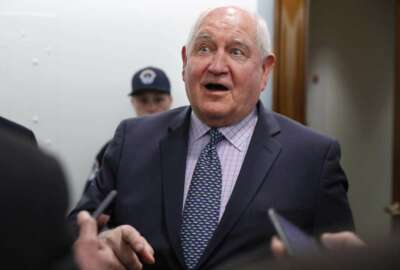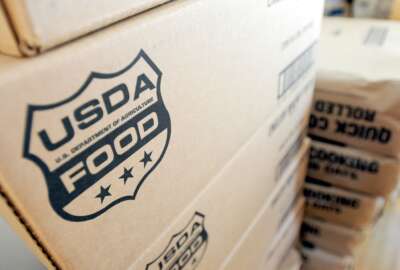
USDA buys time for SNAP under shutdown — but for how long?
Experts say the Supplemental Nutrition Assistance Program (SNAP) would venture into uncharted territory if a partial government shutdown continued thro...
The Agriculture Department has implemented a stopgap solution to keep Supplemental Nutrition Assistance Program (SNAP) benefits running through next month, but experts say the program would venture into uncharted territory if a partial government shutdown continued into March.
“At that point, USDA will have to face up to an issue that I don’t think that any administration has been very enthusiastic to look at,” Georgetown Law professor David Super said in an interview last Thursday.
Under the Carter and Reagan administrations, SNAP benefits — also known as “food stamps” — depended entirely on congressional appropriations.
The 1977 Food Stamp Act even allowed the agency to reduce benefits to households if the agency projected an appropriations shortfall. However, the 2008 Food and Nutrition Act contains language that, according to Super, further defines SNAP benefits as an individual entitlement.
Related Stories

Why USDA’s IT modernization effort is different this time
Under the now-expired Dec. 21 continuing resolution, USDA had the authority to continue paying SNAP benefits until Jan. 20.
A senior administration official, in an interview last Thursday, said USDA’s short-term plan to keep SNAP running demonstrated the lengths the Trump administration has taken to try to lessen the shutdown’s impact on the public.
“If we didn’t care about this, and we were open to making the shutdown as painful as possible, we could’ve just sat there and let this thing happen where it wasn’t loaded after [Jan. 20] … and they would’ve missed the window,” the official said. “When the issue was raised to us, we were thinking, ‘OK, how can we make this work?'”
In order to take advantage of this window, USDA will issue SNAP benefits to states earlier than usual. The agency has followed this strategy before when states braced for major hurricanes.
Scaling the plan to include all 50 states, Super said, shouldn’t pose a challenge.
“It’s highly automated, it’s electronic now,” he said.” You don’t have armored cars running around with food stamps in the back the way you used to. It’s a lot easier now.”
USDA Secretary Sonny Perdue made assurances last week that the CR provision should give lawmakers and President Donald Trump ample time to reach an agreement to reopen shuttered agencies.
However, the agency has not made clear its plan to keep SNAP benefits running through March if the shutdown continues for that long.
Diane Whitmore Schanzenbach, director of Northwestern University’s Institute for Policy Research, said any delay in SNAP benefits, even for a couple days, would cause “real hardship” for families who, by and large, are living paycheck-to-paycheck.
“We’ll be really in a bad situation in another month if this continues to drag out,” Schanzenbach said in an interview Monday. “We just can’t be gambling with these resources. It provides a fundamentally important part of a family’s budget when families fall on hard times.”
Nearly 20 million households use SNAP benefits each month, and about 80 percent of benefits are spent within two weeks of receiving them. As a result, Schanzenbach said SNAP benefits serve as a major revenue stream for local supermarkets.
“It will harm the local economy as well if these benefits don’t get paid out,” she said.
Copyright © 2024 Federal News Network. All rights reserved. This website is not intended for users located within the European Economic Area.
Jory Heckman is a reporter at Federal News Network covering U.S. Postal Service, IRS, big data and technology issues.
Follow @jheckmanWFED




